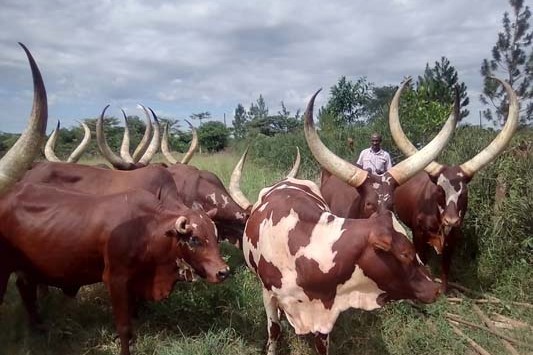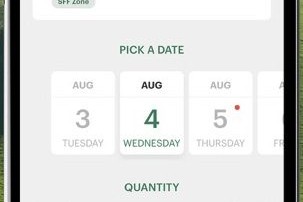What is cloud computing and how can it help you onfarm? Karen Trebilcock explains.
Remember that time when everyone said jobs would go in farming and we would all be working on computers instead?
Computer science, IT, was the only way forward for the nation and we would all be employed by tech companies?
Well, in a way it has happened, but not the way people thought it would.
Instead, tech has come to the farm.
Farming, especially dairy, is one of the biggest users of the cloud in New Zealand. Not bad when you consider some rural households are still struggling to do online banking because of poor internet.
So what is the cloud and how do we use it?
Firstly, it has nothing to do with those things in the sky that either give us too little or too much rain.
Cloud storage simply means data is stored in an off-site facility that can be accessed from anywhere as long as you have an internet connection and a device to access it (your phone, laptop, computer, smart TV).
And that data storage area is not even in the sky. It’s here on earth somewhere, usually a lot of somewheres.
It’s called the cloud simply because nerdy computer geeks love using cool words to confuse the rest of us.
If your neighbour can show you his cows calving in real time on his phone while he’s having a beer with you in the pub then he’s using the cloud. If you’re sharing information with staff and farm partners using Dropbox then you’re using the cloud. If you’re watching City on a Hill (I thoroughly recommend it) on Neon, you’re using the cloud.
It allows us to use data without maxing out our computer or phone or TV’s internal data storage – we’re using the cloud instead.
CLOUDY DOWNSIDES
Of course there are some downsides. Because the data is accessible from anywhere, that anywhere could be the laptop of a pimply-faced Russian bored because he can’t go outside because of a Siberian snowstorm ripping through. And he knows how to send an impolite ransom note following his little hack.
But, unlike Waikato Hospital, farming has so far not been in his sights and there are a lot of measures put in place by providers of our cloud storage to keep our data as safe as it can be.
Besides using the cloud on your farm, you’re probably also using IoT (not to be confused with laugh out loud LOL). The abbreviation stands for another piece of nerdy jargon called the Internet of Things.
It’s a system of interrelated computing devices, mechanical and digital machines, objects, animals and even people that are provided with unique identifiers (UIDs) and the ability to transfer data over the internet without requiring human-to-human or human-to-computer interaction.
Web-enabled smart devices use embedded systems, such as processors, sensors and communication hardware to collect, send and act on data they acquire from their environments.
On the farm, the thing in the IoT could be your milk vat sending a message to the Fonterra tanker driver that your milk is at the right temperature to be picked up or it could be your cow who’s collar or ear tag has figured out it’s on heat. The thing uses, of course, the cloud to get its message to where it should be going – usually your phone.
Many of these things use algorithms to figure out what is going on. An algorithm is simply a set of rules that software uses to do stuff. A cow collar knows a cow is on heat not by measuring her hormone levels. Instead it is measuring how far she is walking in a period of time. Cows in the herd that are walking more than others in the same herd are on heat because it’s known that cows on heat walk around looking for other cows on heat or a bull.
This measurement, used against the average of the rest of the herd which are not on heat, is the algorithm that says ‘cow number 139 is ready to be mated’.
It’s algorithms that will also tell us ‘cow number eight you have calved’.
Allowing the IoT to talk to other things about the algorithm it has just worked through, such as your cow collar to your drafting gate, are application programming interfaces (APIs). APIs will make sure the cow on heat is standing in a pen at the end of milking ready for the artificial breeding technician.
API connects different devices and software together so your cow’s ear tag can talk to your dairy’s drafting gate or your soil moisture meters can talk to your irrigator without you having to be part of their very technical (and probably quite boring) conversation.
Even if different companies installed your cool computerised gadgets and designed how they operate, APIs allow them to all to work together.
It’s the warm fuzzy stuff of software and hardware linking hands in the clouds discussing algorithms until the cows come home.
JUST USE IT
If you are feeling a bit bewildered here, don’t worry. None of the above you actually need to know. Everyone can turn on a television but how many of us know how they actually work? It’s the same with our smart technology.
The point is we need to start using it.
Cloud storage, the IoT, algorithms and APIs all make farming easier. Drafting gates, cow sensors and moisture meters are doing the work we used to have to do and most of the time they do it far better than us.
They also measure and record more accurately so we can have records of what happened and when to keep dairy companies and regional councils happy.
They allow us to do the right things at the right time. Cows can’t tell us if they have an upset stomach but a collar around their neck can detect she’s no longer moving her jaw from side to side so is no longer ruminating.
In addition, technology will help us sort out our labour shortage on dairy farms. We’ve relied on the number eight wire mentality and doing things ourselves for too long. It’s time to lighten the load and let tech take over and that includes milking our cows.
Travel through northern Europe and try to find anyone standing in a dairy for hours putting cups on.
And if we all embrace tech a little bit more, then it might allow Greenpeace to truthfully have a go at us about industrial dairying in New Zealand.





